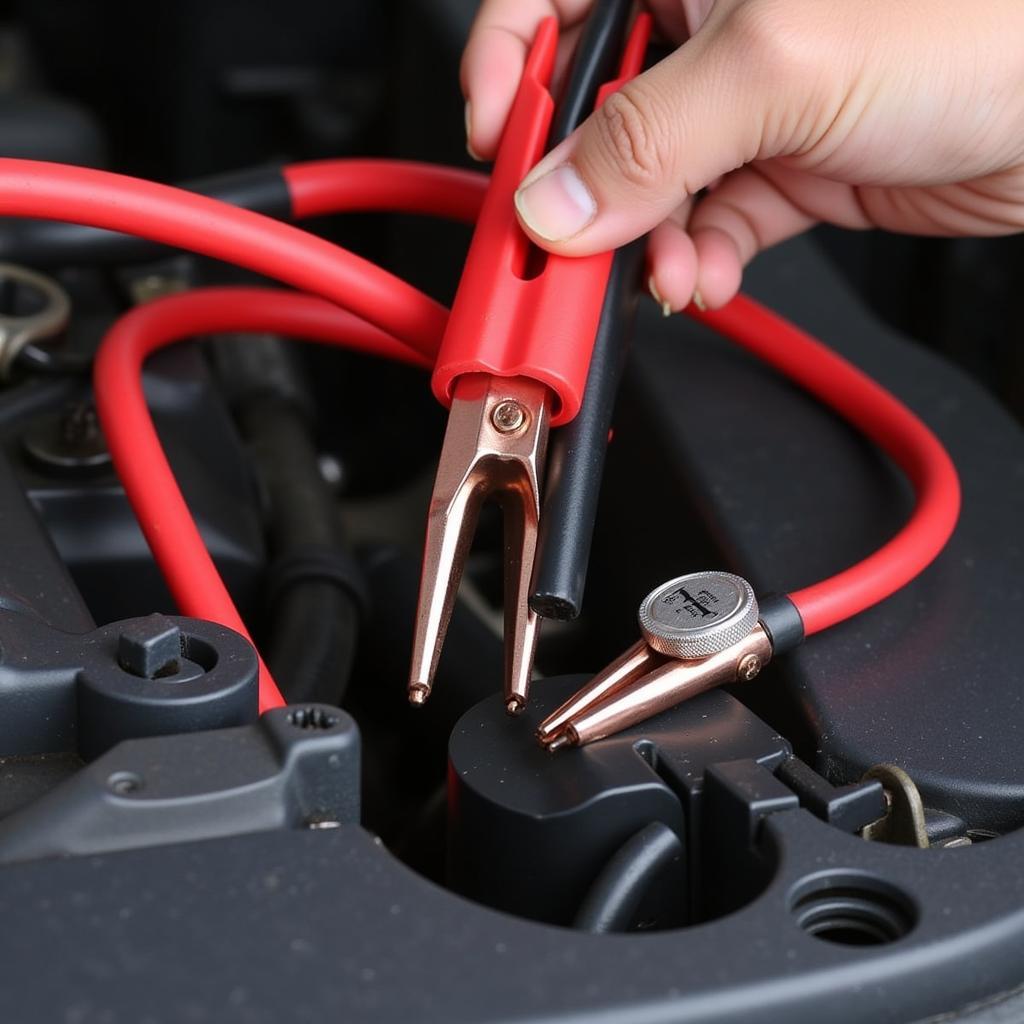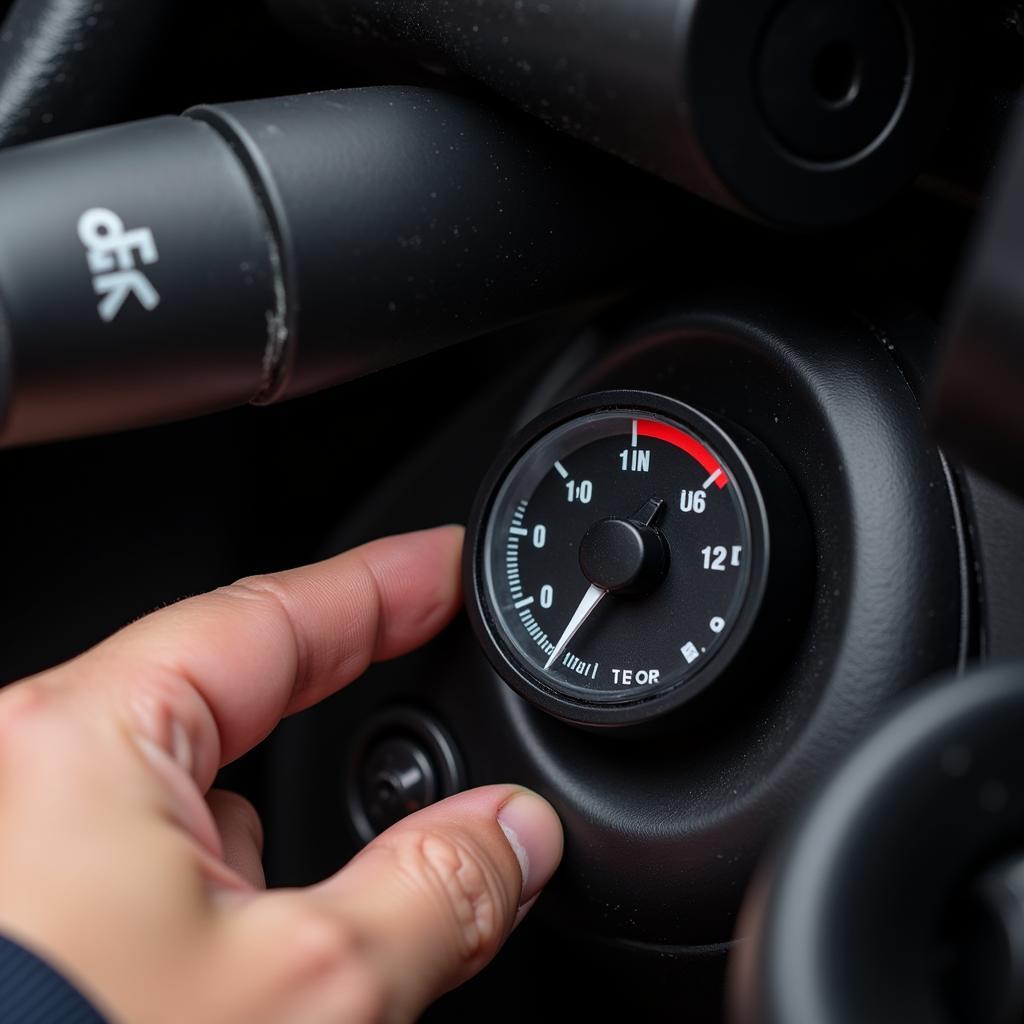The jaguar xf brake pad warning light is a crucial safety feature that alerts you to potential brake issues. Ignoring this warning can lead to costly repairs and compromise your safety on the road. This guide provides comprehensive information on understanding, diagnosing, and addressing the brake pad warning light in your Jaguar XF.
As a driver, understanding the importance of your Jaguar XF’s brake system is paramount. Your brakes are your lifeline, and any indication of a problem shouldn’t be ignored. The brake pad warning light is designed to alert you when your brake pads have worn down to a point where they need replacing. Addressing this issue promptly ensures optimal braking performance and safety. For more information regarding Jaguar brake pad warnings, please visit jaguar brake pad warning.
Understanding the Jaguar XF Brake Pad Warning Light
The brake pad warning light usually illuminates as an amber or red symbol on your dashboard. While it primarily indicates worn brake pads, it can also point to other issues within the braking system, such as low brake fluid or a malfunctioning sensor.
What Causes the Warning Light to Come On?
- Worn Brake Pads: This is the most common reason. As you use your brakes, the friction material on the pads wears down. When it reaches a critical level, a sensor triggers the warning light.
- Low Brake Fluid: Low brake fluid can indicate a leak in the system, which can compromise braking performance.
- Faulty Brake Pad Wear Sensor: The sensor itself can malfunction, triggering the warning light even if the brake pads are fine.
- ABS Issues: Problems with the Anti-lock Braking System (ABS) can also trigger the warning light.
You can find more specific information related to the low brake pad warning light on your Jaguar XF at low brake pad warning light jaguar xf.
Diagnosing the Problem
If your jaguar xf brake pad warning light illuminates, it’s crucial to diagnose the issue promptly.
Checking Brake Pad Thickness
Visually inspect your brake pads through the wheel spokes. If the friction material is less than 1/4 inch thick, it’s time for replacements.
Checking Brake Fluid Level
Open the hood and locate the brake fluid reservoir. Check the fluid level against the minimum and maximum markings.
Diagnosing Sensor Issues
A faulty sensor requires professional diagnostic tools. A mechanic can use a multimeter to check the sensor’s continuity.
Addressing the Jaguar XF Brake Pad Warning Light
Once you’ve diagnosed the problem, take the necessary steps to address it.
Replacing Brake Pads
If your brake pads are worn, replace them immediately. This is a job that can be done by a DIY enthusiast, but if you are unsure, consult a qualified mechanic. After replacing the pads, it’s essential to reset the warning light. Learn how to reset the jaguar xf brake pad warning light by visiting jaguar xf brake pad warning light reset.
Topping Up Brake Fluid
If your brake fluid is low, top it up to the recommended level with the correct type of brake fluid specified in your owner’s manual. However, if you frequently need to top up your brake fluid, it’s essential to investigate a potential leak in the system.
Replacing Faulty Sensors
If a faulty sensor is the culprit, it needs to be replaced. This usually involves removing the wheel and accessing the brake caliper to replace the sensor.
“Regular brake system maintenance is crucial for safety,” says John Smith, a certified automotive technician with over 20 years of experience. “Don’t ignore warning lights; they’re there for a reason.”
Resetting the Warning Light
After addressing the issue, you might need to manually reset the brake pad warning light. This process might vary depending on the model year of your Jaguar XF. Consult your owner’s manual or look for online resources for the specific reset procedure. For a guide on resetting the low brake pad warning on your Jaguar XF, check out jaguar xf brake pads low warning reset.
Conclusion
The jaguar xf brake pad warning light is a vital safety indicator. Addressing this warning promptly ensures optimal braking performance and keeps you safe on the road. Regular brake maintenance and prompt attention to warning lights are essential for the longevity of your vehicle and your safety. If you’re unsure about any aspect of brake maintenance, consult a qualified mechanic. Don’t hesitate to seek professional help if the warning light persists after troubleshooting.
FAQ
-
How often should I check my brake pads? It’s recommended to visually inspect your brake pads every six months or 10,000 miles.
-
Can I drive with the brake pad warning light on? While you can still drive, it’s not recommended. Worn brake pads compromise braking performance and can damage your rotors.
-
How much does it cost to replace brake pads on a Jaguar XF? The cost varies depending on the type of brake pads and labor costs.
-
What is the brake pad wear sensor? It’s a small sensor embedded within the brake pad material that triggers the warning light when the pads wear down.
-
Can I reset the warning light myself? Yes, often you can. Consult your owner’s manual or search online for specific instructions for your Jaguar XF model. You might also find information on brake pad low warning light jaguar xf.
-
What if the light stays on after replacing the pads? The sensor might be faulty or the reset procedure wasn’t performed correctly.
-
What type of brake fluid should I use in my Jaguar XF? Always use the brake fluid type specified in your owner’s manual. Using the incorrect type can damage your braking system.



